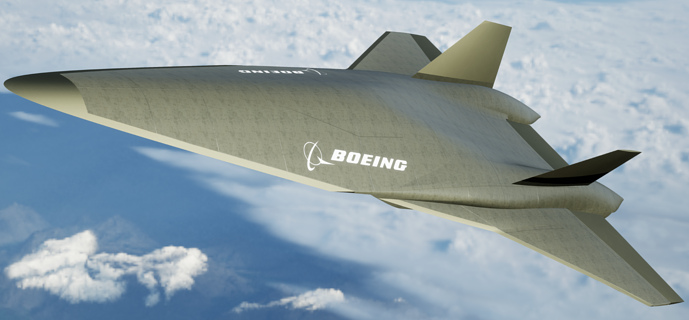The National Aeronautics and Space Administration (NASA) has partnered with Boeing and Northrop Grumman to identify what is needed to bring an ultra-high-speed Mach 4 passenger jet to the commercial marketplace.
At the end of the twelve-month contracts, both companies will deliver a set of designs and technology roadmaps for a commercial vehicle that can travel as fast as four times the speed of sound, including propulsion, materials, and other technological hurdles.
Twenty Years of Advancements Since the Death of Commercial Supersonic Travel
In the late twentieth century, the wealthy could travel from New York to London and back in the first and last commercial supersonic passenger jet, the Concorde. Since its retirement in October 2023, commercial air travel has been limited to around 600 mph or roughly 80% of the speed of sound. That means in 2023, a trip from New York to London still takes over 8 hours.
Fortunately, a number of technological achievements pointing to a new era of supersonic travel in the very near future have been developed during that interim. For instance, breakthroughs in material science have made building a plane that can travel at Mach 4 without falling apart or burning up much more viable. Similar improvements have taken place in propulsion technology with the development of high-speed ramjets and ultra-high-speed scramjets (supersonic combustible ramjets) capable of propelling an aircraft at supersonic and possibly hypersonic (five times the speed of sound) speeds.
One of the most significant developments comes courtesy of NASA’s X-59 program, which aims to dramatically reduce the sonic boom caused by aircraft as they pass through the sound barrier. The sonic boom created by Concorde limited its use to overseas routes where an audible boom wouldn’t rattle the houses of people living below the flight path.
Now, NASA is tasking their industry partners to take those developments, and others, to the next level by laying out a roadmap to finally building a commercial vehicle that can travel over land at up to Mach 4, reducing a trip from New York to London down to less than two hours.
Technology Milestones Finally Make Mach 4 Commercial Travel Viable
In an August 22 press release, NASA officials talked about how, thanks to advancements made over the last few decades, the agreements with Boeing and Northrop Grumman are moving past theories of Mach 4 aircraft to perform actual concept studies.
“We conducted similar concept studies over a decade ago at Mach 1.6-1.8, and those resulting roadmaps helped guide NASA research efforts since, including those leading to the X-59,” said Lori Ozoroski, project manager for NASA’s Commercial Supersonic Technology Project. “These new studies will both refresh those looks at technology roadmaps and identify additional research needs for a broader high-speed range.”
Advanced Air Vehicle Program Bringing Mach 4 Commercial Travel to Reality?
Operating under NASA’s Advanced Air Vehicles Program (AAVP), the Boeing team includes partners Exosonic, GE Aerospace, Georgia Tech Aerospace Systems Design Laboratory, Rolls-Royce North American Technologies, and others. The Northrop Grumman Aeronautics Systems team includes partners Blue Ridge Research and Consulting, Boom Supersonic, and Rolls-Royce North American Technologies.
According to the release, “each team will develop roadmap elements to include airframe, power, propulsion, thermal management, and composite materials that can hold up under high-supersonic speeds.” This effort includes identifying which technologies are ready to deploy and which areas need more development. At the conclusion of the twelve-month term, each group will create “non-proprietary designs” for concept vehicles.
“The design concepts and technology roadmaps are really important to have in our hands when the companies are finished,” said Mary Jo Long-Davis, manager of NASA’s Hypersonic Technology Project.
Long-Davis notes that the plans from both teams should also take into account safety, efficiency, economic, and overall societal considerations. “It’s important to innovate responsibly so we return benefits to travelers and do no harm to the environment,” the project manager said.
Finally, the release points out that after the conclusion of the twelve-month period and the evaluation of the designs submitted by each team, NASA and its industry and academic partners “will decide whether to continue the research with their own investments.”
Christopher Plain is a Science Fiction and Fantasy novelist and Head Science Writer at The Debrief. Follow and connect with him on X, learn about his books at plainfiction.com, or email him directly at christopher@thedebrief.org.

